
My mummy jumped out of a plane’ was a random comment that caught many children’s imaginations as they chatted over breakfast one morning at Larkhill Church Day Nursery in Yeovil, Somerset. It led to them talking to the nursery administrator about her skydiving experience and finding out more about jumping from heights and floating.
‘We always find it really important to have everyone sat together at mealtimes to encourage social interaction, the skill of taking turns during a conversation and listening to others. I think it is something that children don’t always have the opportunity to do at home,’ says manager Claire McSevney. ‘But we never know in which direction the conversations will go.’
SKY HIGH
Discovering what it feels like to do a skydive
Coincidentally, Claire had photos of nursery administrator Zoe Green doing a skydive, so she showed these to the children on seeing how curious they were about the idea of jumping from a plane.
The children were fascinated to see the specialist gear and also guess who it was in the photograph. They then drew up a list of questions to ask Zoe, including how it felt to jump from an aeroplane, whether she had felt scared and what colour the parachute was.
The children enjoyed asking Zoe about her experience and discussing how the jump had to be from an aeroplane rather than a helicopter as the rotor blades would be a hazard for the parachute.
‘Did you die?’ was an unplanned question from one of the children. ‘We explored that Zoe wouldn’t be here and able to discuss the experience with us if she had died,’ says Claire. The conversation then turned to safety, risk and the importance of using the correct equipment when doing physical activities. They also discussed the purpose of the parachute.
ON SCREEN
Watching a skydive
Staff showed the children a video on YouTube of a person skydiving, so that they could see what happens. They saw the person jump out of the aeroplane with a parachute strapped to their back and free-fall through the sky. They then watched what happened when they pulled the chord and the chute opened, and saw how the skydiver’s descent slowed down when the parachute was deployed.
‘If it hadn’t been for the current Covid times, we would have probably arranged a trip to an airfield and seen what we could have gained from a visit, or invited someone else in to speak to the children,’ says Claire.
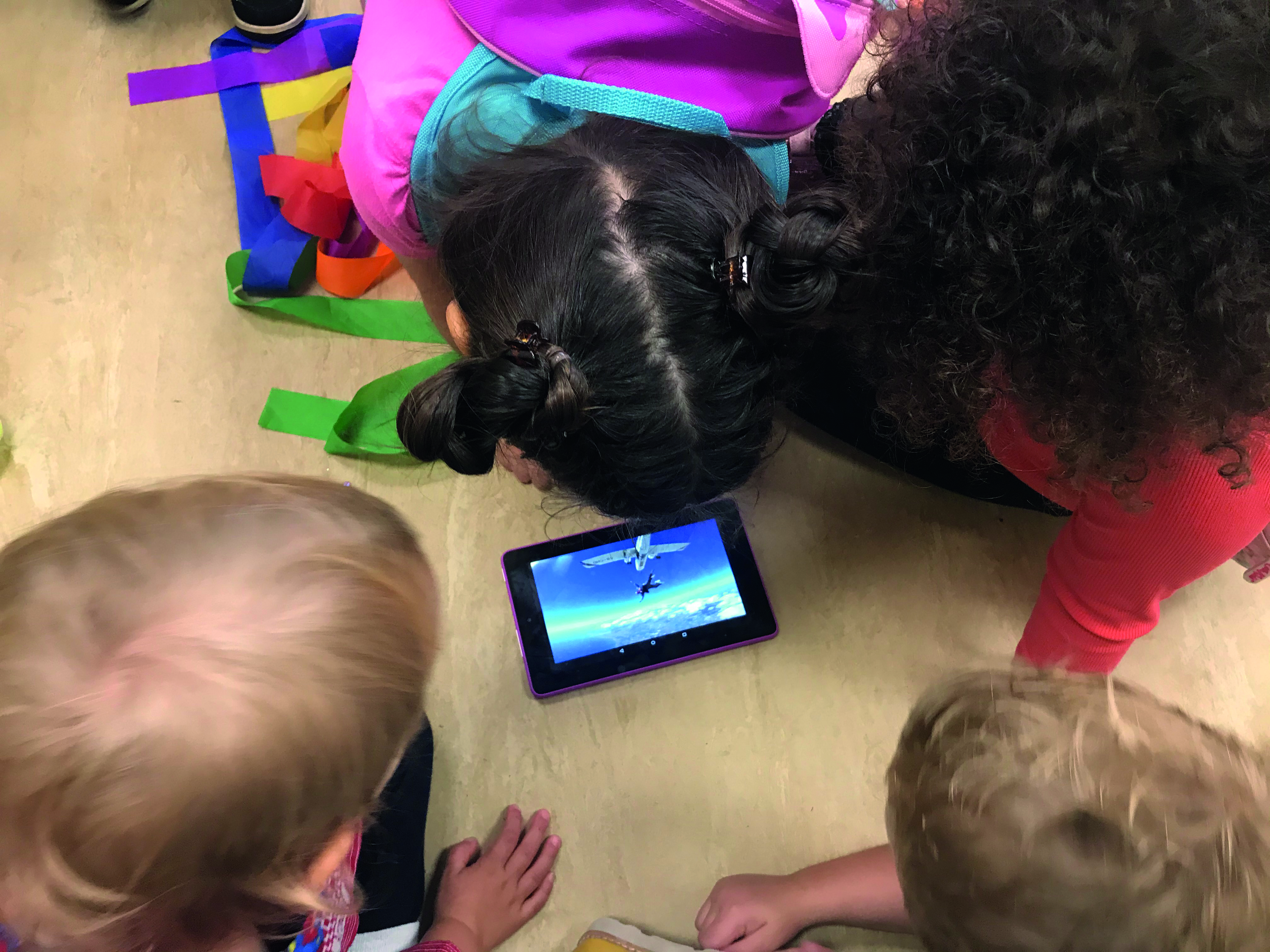
FROM A HEIGHT
Mastering the art of jumping and assessing risk
The discussions about skydiving progressed to the children wanting to experiment with jumping from a height. As jumping requires strength, balance, co-ordination, body awareness and motor planning, staff first talked to the children about how to jump, and land safely by bending their knees.
They then added an element of risk and excitement for the children by suggesting that they jump from the tables. ‘We sometimes allow the children to stand on chairs if they want to build tall constructions, because we want to encourage them to explore the risk, but they’d never been allowed to climb onto the tables before,’ says Claire.
‘I was really surprised how some children did not put any thought into it and just got up and jumped without support, whereas others wanted to have their hand held. For them they were really taking a big risk. They wanted to do it, but they felt nervous.
‘For us as teachers it surprised us which children went ahead and did it confidently and which were more reserved – it was not the ones we would have presumed. It was great to see how some children’s confidence grew as they persisted. They knew that even if they did not land on their feet the first time that they could try again.’
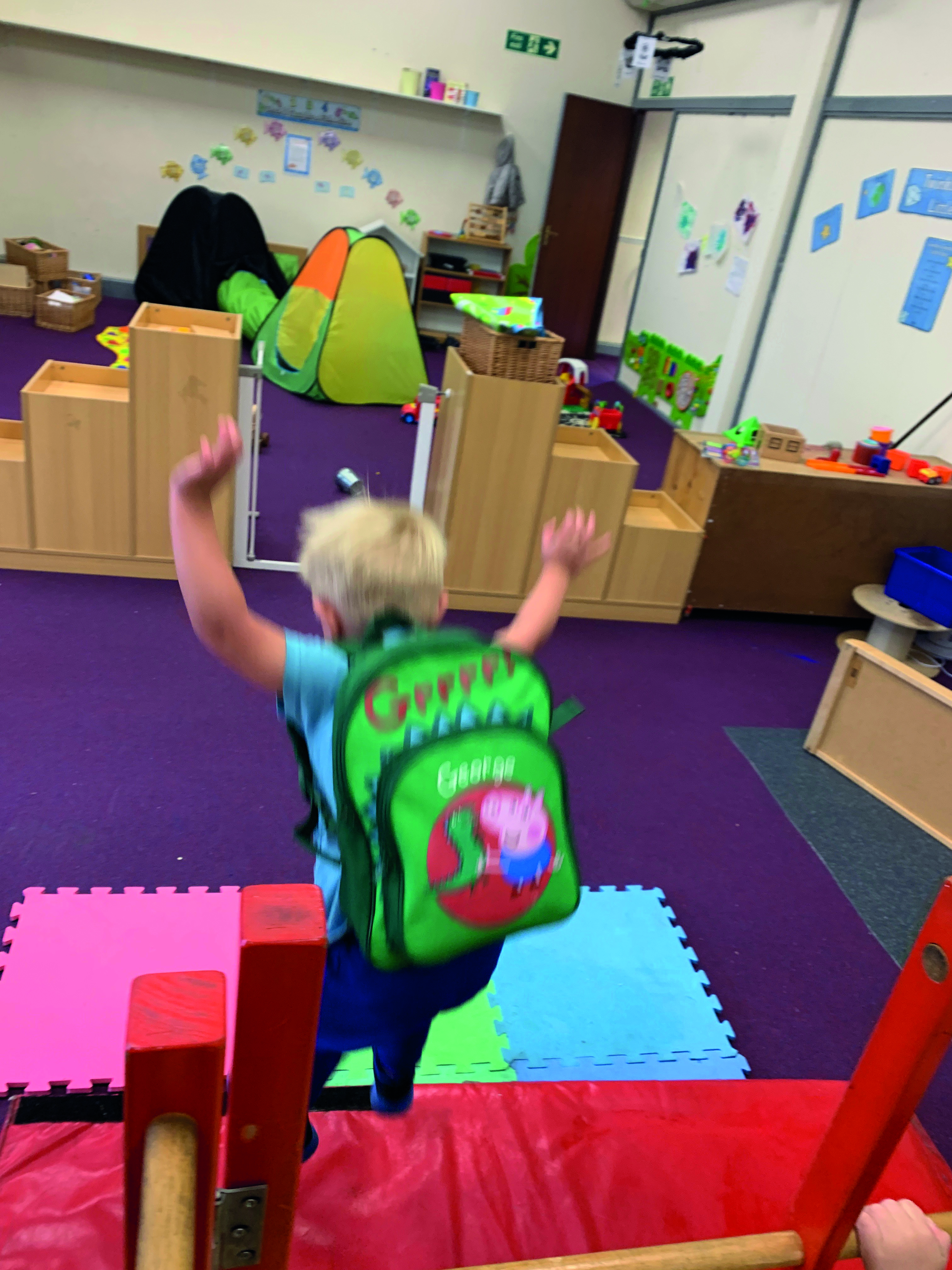
TO NEW HEIGHTS
Creating ‘skydives’
Children expressed an interest in jumping from a higher point, so their jumping progressed to the top of the indoor climbing frame. They remembered their talks about safety and suggested jumping onto exercise mats to cushion their landing. Children also linked the jumps to the YouTube clip they had watched and said they needed parachutes, so they used their own backpacks to make the experience more realistic.
‘We talked about how it was higher and that they should think about how they landed,’ says Claire. ‘We also talked about balance and how it may feel different jumping with a backpack on. The children thought about what they were doing and put their own boundaries in place, such as only allowing one person at a time on the climbing frame, like they did when they were jumping from tables.’
Children displayed empathy and teamwork by encouraging and cheering others to jump from the climbing frame. ‘Some children were quite scared, which enabled us to talk about how their body felt when they are scared, with one child saying, “My tummy feels really funny”,’ recalls Claire.
‘It was good to be able to embrace the nervous children and reassure them that it is OK to say no to doing something that they are not comfortable with. For some children, it was empowering to understand that they have a choice.’
FLOATING IN SPACE
Exploring gravity on Earth and in space
One child stood on the top of the climbing frame and announced that he was going to be a spaceman, which took the investigations into a different area. They explored the idea that astronauts do not need to use parachutes because the ‘air’ is different in outer space.
‘It was interesting to talk about how if we jump, we get pulled down by the Earth’s gravity, so we need a parachute to slow us down. But a spaceman jumps and floats,’ explains Claire.
The children wanted to test gravity for themselves and make their own skydivers by using Action Man figures, and improvised parachutes from nappy bags with the handles under the dolls’ arms.
When the Action Man figures plummeted to the ground, the children tried lighter small-world figures, with the same result. The children found that paper people floated down, and they timed how long it took for them to land.
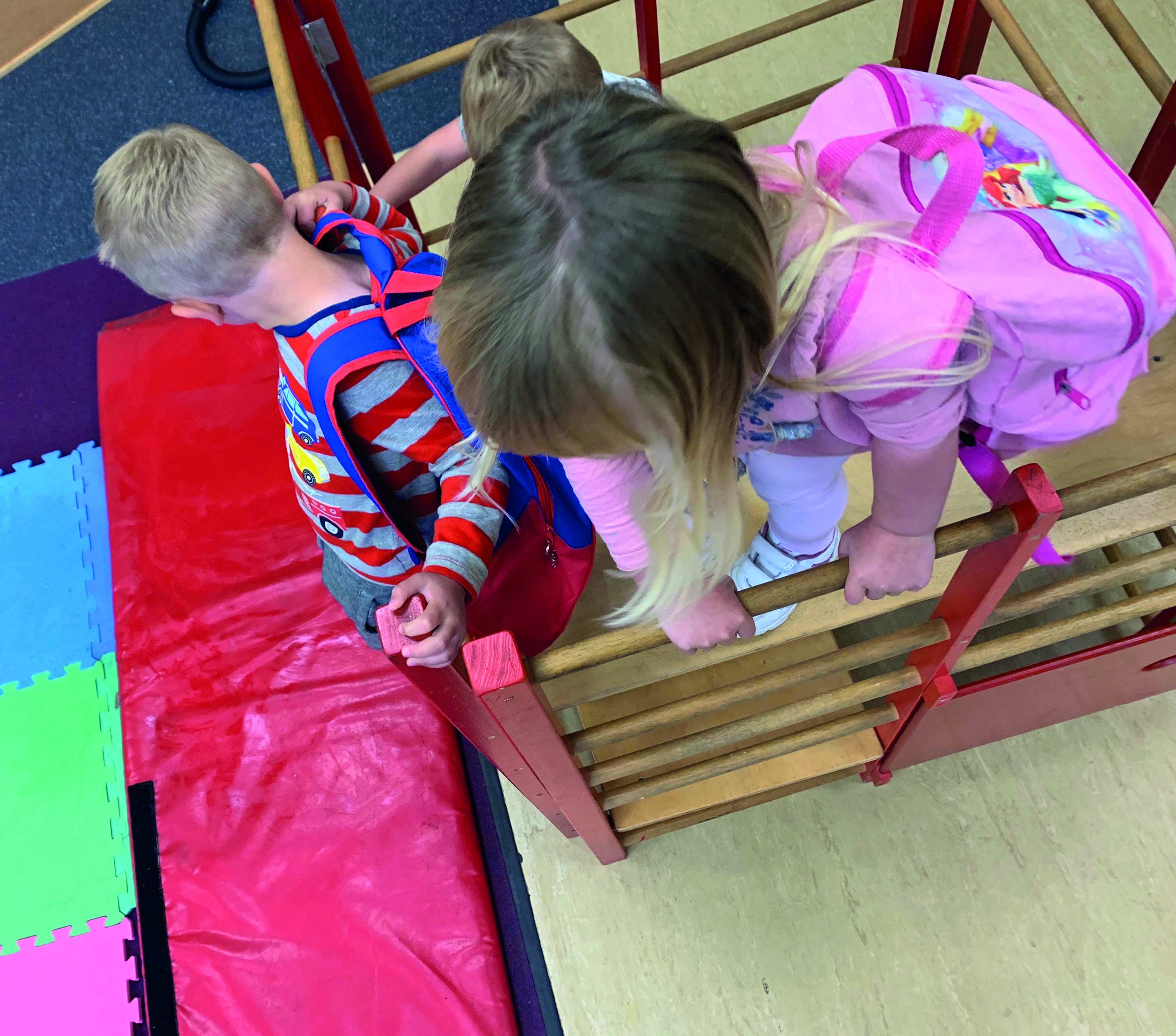
A GIANT LEAP?
Developing early science, maths and physical skills
‘The children’s physical development skills were one of the main learning outcomes. Sometimes we take jumping for granted because adults regard it as easy, but we realised that it can be a difficult action for some children to understand,’ explains Claire.
‘It was an exciting experience for the children, and they returned to it in their play. There was a lot of communication as they described both actions and feelings, and maths and science concepts were everywhere in their explorations.’
BOOK CORNER
 Jump! by Tatsuhide Matsuoka
Jump! by Tatsuhide Matsuoka
A frog jumps. Boing! A dog jumps. Boi-oi-oi-oi-oing! Loads of animals jump in this board book, including children!
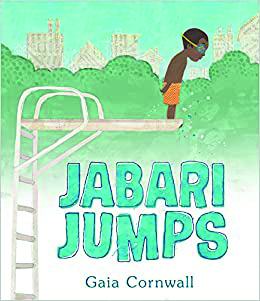 Jabari Jumps by Gaia Cornwall
Jabari Jumps by Gaia Cornwall
Jabari is ready to jump off the diving board. But when his dad squeezes his hand, Jabari nervously squeezes back in this story about overcoming your fears.
 Parachute by Danny Parker and Matt Ottley
Parachute by Danny Parker and Matt Ottley
Toby doesn’t like heights so he always carries a parachute with him. One day, Toby’s cat gets stuck in a tree and it’s up to Toby to rescue him and conquer his fears.
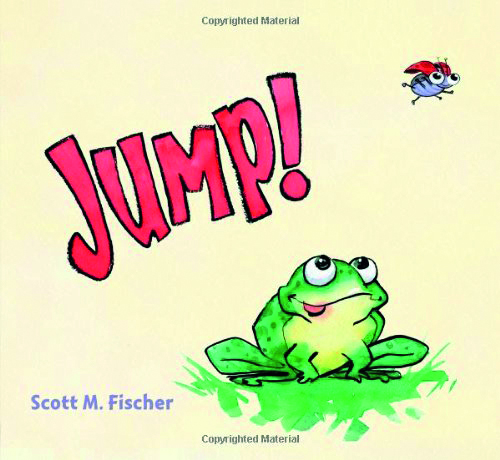 Jump! by Scott M Fischer
Jump! by Scott M Fischer
When a bug sleeping on a jug is chased by a frog, he has to jump to get away. But then that frog (who is sleeping on a log) is in for a similar surprise in this fun repetitive book with simple rhymes.
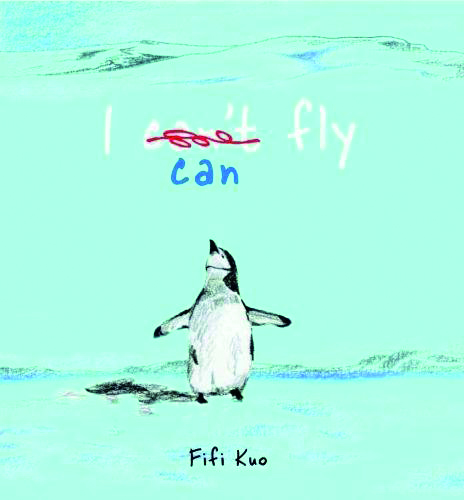 I Can Fly by Fifi Kuo
I Can Fly by Fifi Kuo
A small penguin sees all the birds in the sky and wants to fly like them. Penguin tries everything he can but to no avail. Then he learns that he can fly – underwater!
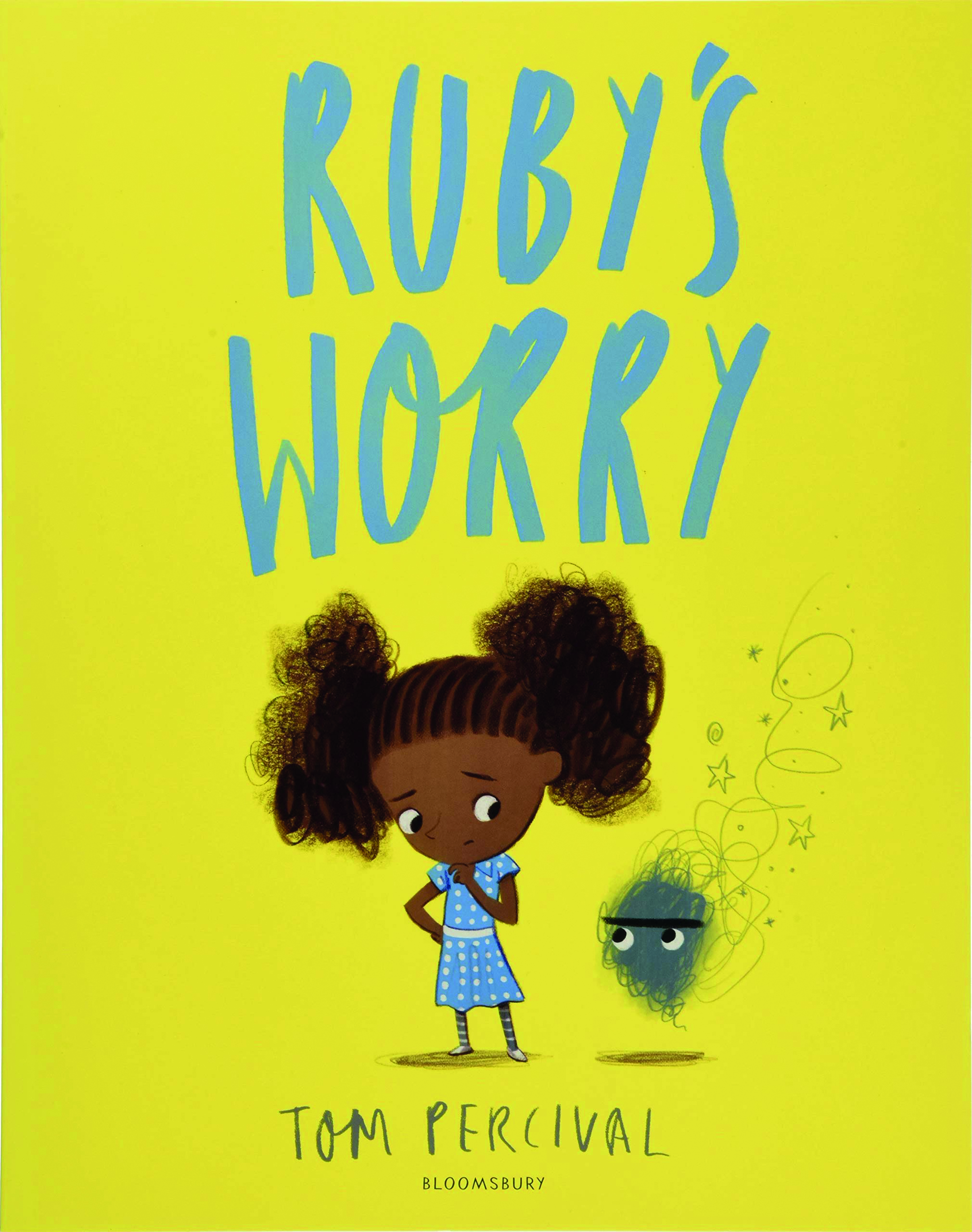 Ruby’s Worry by Tom Percival
Ruby’s Worry by Tom Percival
Ruby loves being Ruby until, one day, she finds a worry. At first, it’s not such a big worry, but then it starts to grow and makes her sad. How can Ruby get rid of the worry?
 Gravity by Jason Chin
Gravity by Jason Chin
What keeps objects from floating out of your hand? What if your feet drifted away from the ground? What stops everything from rising up into space? Gravity.









